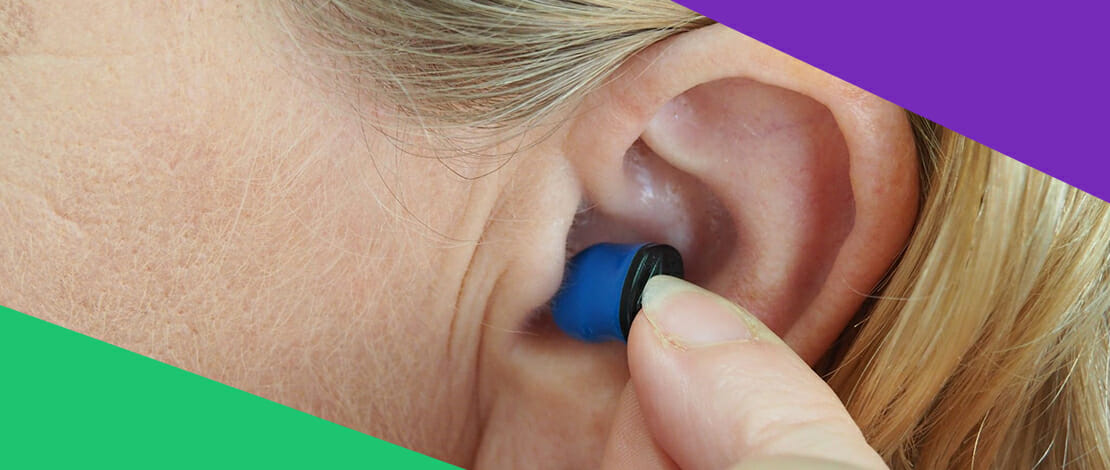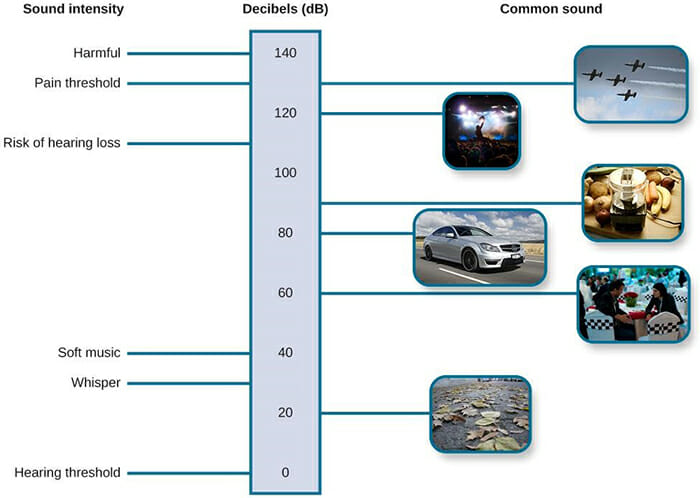How Loud is Too Loud For Headphone Listening?

As we are faced with more noise, from people talking and running about their business, to traffic, both on the roads and in the sky, we tend to seek privacy through headphones. Being extremely popular, due to today’s technology, even affordable headphones sound great. Having a great sound, however, may come at a cost of volume.
We tend to neglect our health, living very busy lives as we do. Fast food, a lack of movement and in the case of headphones, listening for extended periods of time at a high volume. This is particularly true when going through public places where we often feel that we have to “outgun” everybody else, or rather, outmatch the noise.
Loudness can lead to permanent hearing loss so with that in mind, let us explore how loud is too loud for headphone listening.
The General Principles of Loudness And What is Considered Too Loud
We measure loudness, or rather, sound pressure, by using decibels, labelled as dB. A decibel is a tenth of a bel (named after Alexander Graham Bell), but bels are rarely used as a unit of measure compared to decibels.
It is important to understand the overall scale of loudness, to get a good idea of which levels of volume you should avoid. Following is a handy decibel comparison chart, which should paint a proper picture of sound levels.

Image source: Lumen Learning
In this chart, we can see what type of noise a typical situation produces, from live concerts which are about 115-120 dB, to whispers which are around 30 dB, not to mention your own breathing (under normal circumstances), which should be around 10 dB.
Our hearing is specific. The human ear does not perceive sound in a linear fashion, but rather, logarithmically. Therefore, an increase of 1 dB is imperceptible. We can barely perceive a change of 3dB, while we can definitely perceive one of 5 dB. An increase of 10 dB is perceived by our ears as double the loudness.
Hearing loss can start occurring at levels above 90 dB, which is why there is a strong need to limit exposure to loud sounds for an extended period of time (some companies offer hearing protection when their workers are exposed to noise over 90 dB).
Following is a table which explains how much time one should spend exposed to varying degrees of loudness.
| Recommended Noise Level Exposure | |
| Minutes or Hours Per Day | Sound Level |
| 8 Hours | 90 dB |
| 6 Hours | 92 dB |
| 4 Hours | 95 dB |
| 3 Hours | 97 dB |
| 2 Hours | 100 dB |
| 90 Minutes | 102 dB |
| 60 Minutes | 105 dB |
| 30 Minutes | 110 dB |
| 15 Minutes | 115 dB |
We start experiencing pain between 115 and 120 dB, depending on the person. Around 150 dB, eardrums can be ruptured. It is important to limit your time exposed to extreme sound levels, because from 90 dB and up, progressive and irreversible hearing damage can happen.
Now we need to put headphones into this perspective to better understand how much is too much.
Headphones – How Loud Do They Get?
Depending on your amplifier (smartphones have a headphone amplifier, albeit not a very powerful one) and the sensitivity and impedance of your headphones, they can go from 85 db (a maximum, not the minimum) up until the drivers break.
Most smartphones should not be able to go over 115 dB, in which case, one should be listening to music for a maximum of 15 minutes. Very sensitive headphones with a low impedance can produce even higher noise levels, which makes things worse in the case of headphones, them being that close to the ear.
Most sound level measurements are taken at a reasonable distance which can vary from anywhere from 2 meters or 6.5 feet to hundreds of meters and feet. Headphones are literally pressed against the ear, or inside the ear canal, which can only make things worse over an extended period of time.
Typically, most smartphones will have a warning and a prompt after a certain volume level, for most devices, after you pass 55% of the maximum volume level. One should do well to listen to this advice.
However, this can vary depending on the type of headphones you have.
Types of Headphones and The Listening Experience
Headphones come in different shapes and sizes. For most audiophiles, open back headphones are the golden standard. For gamers and people who listen to music outside, closed back headphones are a must. The listening experience can be altered by using open or closed back headphones.
Open back headphones have an open back and they let sound escape. They also let sound in. This means, in practice, that you do not get a very private listening experience if you are in a noisy environment. It also means that as sound escapes through the open back, it will not bounce immediately and ricochet directly into your ear. Open back headphones tend to cause less tiredness than closed back headphones.
On the other hand, closed back headphones, even though they can be more tiring (depending on the design and equalization), offer better sound insulation. This in practice means that one does not need to listen to music as loudly as they would with open back headphones.
Have in mind that one can get tiredness from any type of headphones, be it over-ear, on-ear or in-ear. High frequencies are especially tiring to the human ear. In-ear headphones can be more tiring, due to their proximity to the eardrum and the fact that no sound escapes if they are properly fit.
How Loud Should I Play My Music?
Hearing loss starts occurring at levels above 95 dB, and one should not listen to music or anything at those levels for over an hour (due to the headphone proximity to the ear). Headphones should be listened to at a level of between 60 dB until 85 dB. 90 dB should never be reached.
There are simple ways to test this, one of which is simply holding your headphones at an arm’s length away. If you can hear the music in your quiet room, then it is too loud.
Another way to measure loudness is to let your ears do the test. Listen to your music for an extended period of time during the day, at a level you think is too loud. In the evening, sit in a quiet room. You will hear a ringing if you have listened to something which is too loud. This phenomenon also occurs after concerts and one can typically experience it then.
The third way is to listen to the safety messages your smartphones display after the volume goes above 55-60%. Keep it under those levels and you should be safe.
And lastly, if you plan on listening to music in public where noise is inevitable, save up for a pair of noise cancelling headphones. That way, you can listen to music at a safe level and still enjoy the privacy of your playlist.